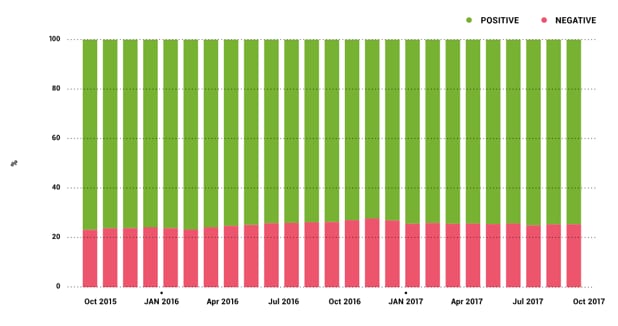The future of the internet might just be written in emoji. Here's why

Emojis could soon replace text for the purposes of information and security. Image: Pexels
Love them or loathe them, it’s a struggle to get by online these days without speaking basic emoji.
From media companies to NGOs and influencers, they’re an increasingly significant part of our daily lives and how we communicate with each other online.
Now, a new report predicts that emojis will begin to replace text as the key provider of content, and that brands and governments will analyze the use of emojis on a macro scale in real-time.
The report also reveals just how widespread their use is - in fact an estimated 95% of people online have used them.
6,400,278,100
(Yes, that’s 6 billion)
And it’s also how many emojis were collected by Brandwatch, a British social media monitoring company, during a two-year study of emoji use on Twitter. The study took place between October 2015 and October 2017 and reveals how we’re using emojis on the platform.

The most popular emojis reveal plenty of faces, lots of hearts and a smattering of hand gestures.
All those smiling yellow faces, thumbs ups and even the odd firework present a pretty positive picture of our emoji use.
And you’d be right to think that. Around 75% of our emoji use is positive - a figure that remained reasonably consistent over the course of the study.

The highest percentage of positive emojis was in February 2016. Brandwatch says this is partly attributable to hundreds and thousands of fans wishing the celebrity Harry Styles a happy birthday.
Negative emoji use was most common in the evening, as the following chart shows.

But the use of positive emojis picked up again as the weekend approached. Positive emoji use hit 77.7% on Fridays and Saturdays - compared to 76.2% on other days.
There’s also a gender difference, with women more likely to use them overall. However, the types of emoji being used are strikingly similar.

The future of emojis
The report also offers four predictions for the future of emojis.
Emojis will cement their position as a truly global language.
The type of emojis will further diversify - e.g. Animojis (animated emojis) and Bitmojis (your own personal emoji)
Emojis will begin to replace text as the key provider of content.
Brands, organizations and governments will analyze the use of emojis on a macro scale in real-time.
What’s next for emojis though is hard to say, apart from, perhaps, 🤷
Don't miss any update on this topic
Create a free account and access your personalized content collection with our latest publications and analyses.
License and Republishing
World Economic Forum articles may be republished in accordance with the Creative Commons Attribution-NonCommercial-NoDerivatives 4.0 International Public License, and in accordance with our Terms of Use.
The views expressed in this article are those of the author alone and not the World Economic Forum.
Stay up to date:
Social Media
The Agenda Weekly
A weekly update of the most important issues driving the global agenda
You can unsubscribe at any time using the link in our emails. For more details, review our privacy policy.







